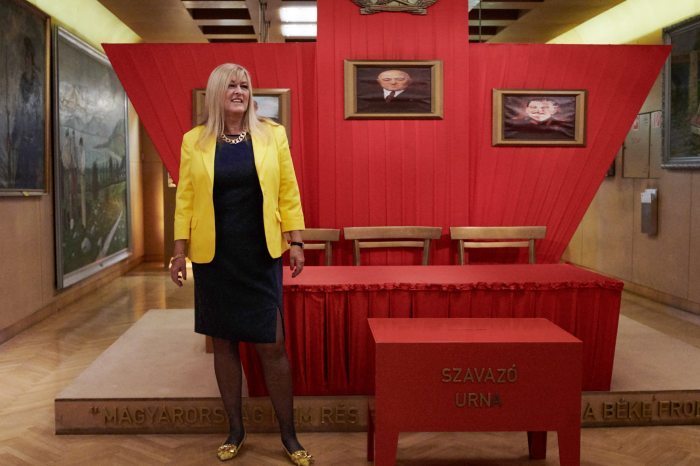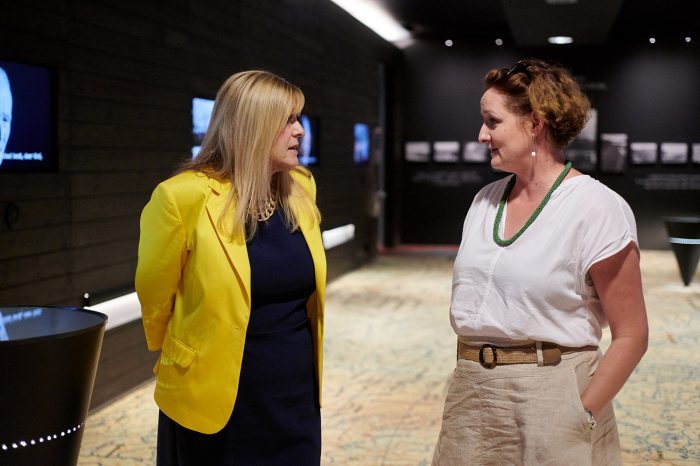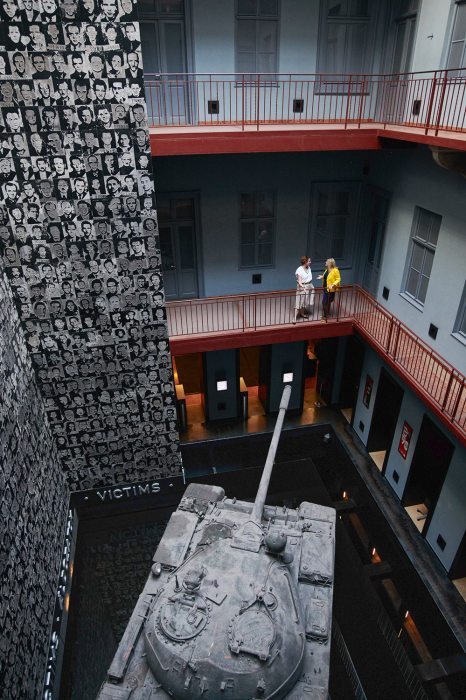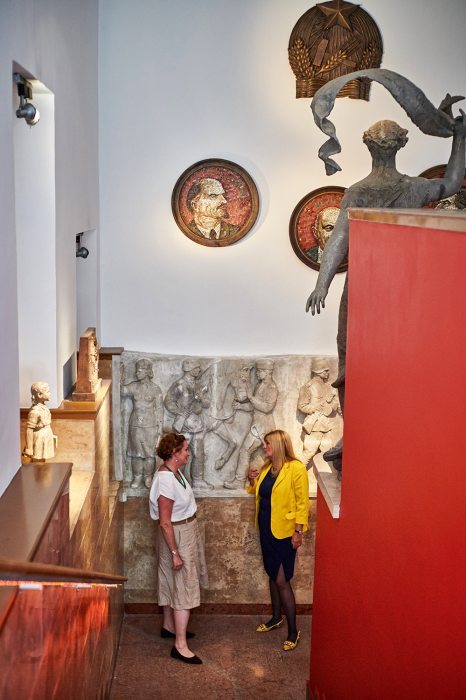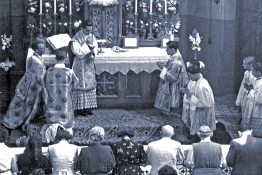What shall we do with the heritage of communism? – an interview with Mária Schmidt
Every year, as we prepare for the commemoration of the 1956 Revolution and Freedom Fight, I wonder whether we will live to see the crimes of communism made an emphatic part of history, not just for the families crippled by the communists. In Gori, Stalin's hometown, the brave Georgians have erected a large marble mausoleum above the house (or rather hut) where he was born. Behind it, in a handsome large Stalin Baroque building, a series of museum rooms tell the story of the Soviet dictator's life. I was expecting that the last halls might be dedicated to the millions of victims of Stalinism, his crimes against humanity and life, but I was disappointed. In the case of other dictators - one only has to think of Hitler - care is taken to avoid the development of a cult. On the eve of 23 October, I spoke to Mária Schmidt, Széchenyi Prize-winning historian, university professor, and Director-General of the House of Terror Museum, about what we have to do with the legacy of communism and how we are dealing with it.
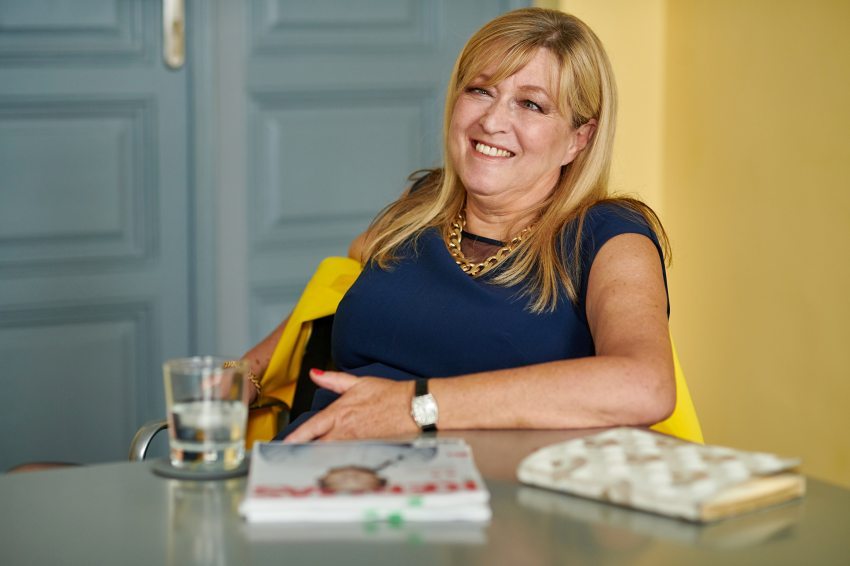
The Director-General points out our achievements: it is a great thing that barely ten years after the fall of the Kádár regime, of communism, we were able to face up to this legacy: we were able to show Hungarian society and the whole world what they did to us - because that is what the House of Terror Museum is all about. Even today, many people are still unable to do this. In the case of Nazism, it took much longer to come to terms with what happened. So we are actually leading the way in this, says Mária Schmidt.
"The first step in coming to terms with the communist legacy is to understand what happened - what they tried to do to us, and of their goals what they succeeded in doing, and what they failed to do. And indeed, thirty years on, things are seen in a different light. There was one question that has always concerned me and my American friends, for example, Norman Podhoretz, who spoke about it here in Budapest at our conference, and that is why Western societies did not celebrate the fact that they had defeated communism. We now understand why: because they’ve never defeated it. Communism is in fact a Western ideology that spread to the East, and we were hit by that East wind, but by the time we had defeated the East, it had taken over the West. The Western intelligentsia, who considered themselves progressives, became Marxist, their language, their values, and their most important aspirations are rooted in that. They embraced atheism, anti-family, and anti-marriage. Two important factors have underpinned this thinking since the 1970s: one is internationalism, now fashionably called globalism; the other is economic neoliberalism, the placing of utility as the overriding consideration. When we threw off Soviet rule, this money-centered world became dominant in our country too. In the Western world, there is no longer a question of good or bad, right or wrong, it is only a question of whether something is useful or not, whether it pays off or it doesn’t. This now presents us with a new challenge, and we have to overcome it. But if we realize that this is the same ideology that we have already overcome, we can go into the battle with greater hope.
In the 1990s, we have already seen the collapse of an empire. We know that it can be survived. We know that communism can be defeated.
Our region has not been Sovietised, we have always had the strength to resist. While the Western world was largely Americanised, we showed resistance to the Eastern version of the same ideology. Now the Western intelligentsia is left with no thought, no idea, nothing. This is the greatest contradiction that exists between us and them. I will give you an example: a friend of mine who was a member of the Central Committee once told me that János Kádár made a speech sometime in the 1970s, apparently from his head, continuously. But in the meantime, he looked down again and again at the paper he had with him. This acquaintance of mine was curious to know what was on the paper, so he took it from the lectern after the speech. Well, there were communist slogans on it, such as "Long live Soviet-Hungarian friendship" and "The Soviet example before us" - even Kádár had to make himself remember these. Even then, everyone was a Marxist or pro-Soviet only on the basis of realpolitik. We knew we had to say these things, but our thinking was not based on them. In the meantime, the Western intelligentsia had become Marxist, and they are now sitting in Brussels. Even the representatives of the right-wing parties started with the Maoists and Trotskyists, and you can't outgrow that, the world explanation, the language, and the structure remain there. So we have to make ourselves aware that we have already defeated them once. Now we can do it again."
We walk around the House of Terror Museum - both my grandfathers were here, in this building, one brought in by the Arrow Cross, the other by the communists - and we talk about the mourning, because the next step in the process, after understanding, is to do the mourning work. After the change of regime, the left-wing elite practically prevented us from doing historical justice. "They didn't even acknowledge that there was something to mourn and someone to mourn," says Mária Schmidt.
"We were not able to bring the communist perpetrators to justice, nor were we able to reproach them. That is why we thought it important to create the Wall of Perpetrators here in the House of Terror Museum. At least this is to show that no one can escape the punishment they deserve."
Today, the museum's staff are engaged in research and publication, and the task is to make the atrocities of totalitarian regimes known to the wider public. The Director-General misses the artworks, books, films, and plays that would do the same thing in their own more effective way. It is in vain to expect these works from the Western film industry, we must produce them and make them known at least here in Central Europe. "Why hasn't a 10-12 episodes series on communism been made yet?" - asks the historian.
This "mourning process" is being carried out under the auspices of the House of Terror Museum, with that in mind was the 1956 commemoration year organized on the 60th anniversary of the Revolution and Freedom Fight. Mária Schmidt feels that their efforts to make a new narrative about '56 accessible have been successful. "Even in Game of Thrones, they say you can defeat anything but a good story. Narrative defines thinking. For a long time, thinking about '56 was defined by a closed society, they cherished its heritage, and they didn't let anyone else in. That's how it could become widespread that 1956 was a revolution of reformers disillusioned with communism and left-wing intellectuals. But it's a completely unrealistic story: imagine the workers of Ganz-MÁVAG encouraging each other, saying, come on, buds, let's go out and demonstrate because there was a very interesting discussion in the Petőfi Circle about surplus value... Oh, please, come on! What the left-wing intellectuals were discussing among themselves was of no interest to more than 500 people. For that no one takes to the streets, people don't risk their lives!
’56 is about the Hungarian people saying enough is enough, they don't do it anymore, because the survival of the Hungarian nation is at stake. It was not the intelligentsia that revolted, but the people were fed up with what was being done to ordinary people, peasants, workers, to the nation. Ultimately, it was about the dignity of the nation.
90% of those executed were ordinary people. That's why we put their pictures on posters all over the country, the pictures of the boys from Pest. It’s always the simple, ordinary people who speak the most beautifully about their motivation. They don't overcomplicate it. They are not afraid to name their feelings, what was in their minds, and why they took up arms. And most of them talked about how they went out to the streets because they were humiliated. They and their nation were humiliated. And there's no need to explain that any further. An intellectual could never put it so simply and so eloquently."
We continue the conversation in the rooms of the House of Terror Museum. “The next step in the mourning process is to move beyond the constant self-pity. This is made more difficult by the fact that we live in an era of competition to see who is the greater victim because this is the basis for special rights. Moreover, the injustice that happened to us after Trianon or the Second World War is indigestible. And yet we have something to be proud of: we have survived, we are free and independent, and we have started to build a democratic country. Perhaps we also need to start thinking differently about Trianon. Perhaps we will even benefit from the fact that however forcibly we were made into a relatively homogeneous nation-state. The point is to do the mourning work so that we can move on. We do not have time for self-pity, we need all our strength to move on. It would also help if we did not believe that Hungary is an island.
If we climb up to the church steeple and look out over the landscape, we can see where we stand in relation to neighboring countries and other people, we can see the connections, and we can see that we have something to be happy about.
Today the entire Western world is based on the historical narrative of the victors of the Second World War. But here is the new world, the 21st century, and no one will care about this old narrative. In order to have a national consciousness we need to be able to move forward, we need to find the language and the channels through which we can tell this to the new generations. We must arouse their interest, we must tell them the story and the truth of their parents and grandparents. That's why I thought it was important for the House of Terror Museum to speak to people in the most popular - in the original and noble sense of the word -,i.e. the most understandable way possible, because only with colorful and meaningful stories can we achieve anything. You have to appeal to the senses. Pay attention to the visuals, work with few but very good texts. You need simple, memorable gestures that everyone can understand," says Mária Schmidt, explaining her thoughts on communication.
"We have to fight against a very strong empire-building intent, like the Soviet Union had. Then you couldn't say that Comrade Brezhnev was stupid, now you can't say that there are two genders, male and female... We have taboos like the old ones. We already know this terrible indoctrination, and we got rid of it once, but now it is upon us again, only it is coming not from the East but from the West. We need to be aware of what we are up against. For a long time, we thought that the West was opposing communism - people have not realized yet that they are the heirs.
Where do we get the ammunition for all this? From God. We have this one thing, what else is there? We must look at history from His perspective because if we look at it any other way, we lose the perspective that can give us hope."
Képmás magazine has launched a new series called Public Treasure, in which Kata Molnár-Bánffy, the publisher of Képmás, talked to dedicated people whose successful work can be of interest to many, and is a Public Treasure, as the title of the series suggests: a common issue, something we want to take care of.
